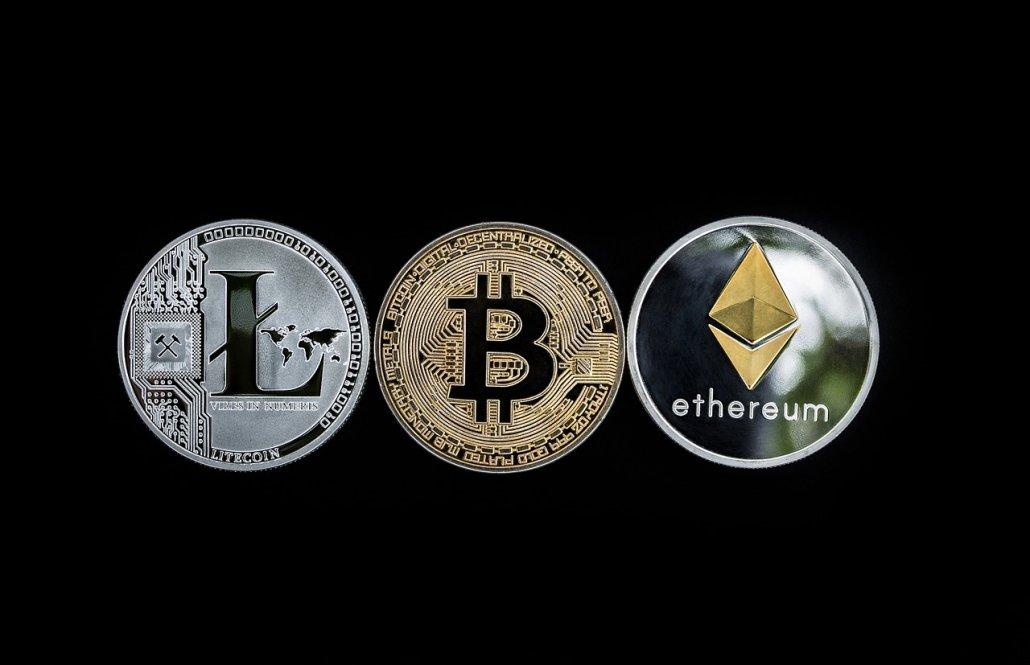In recent market developments, Bitcoin has reclaimed the meaningful milestone of $100,000, a psychological and financial benchmark that has garnered considerable attention among investors and analysts alike. This resurgence comes at a time when corporate credit spreads are experiencing a decline, signaling potential shifts in market sentiment and risk appetite. As both traditional and digital assets navigate a complex economic landscape, understanding the interplay between these trends is essential for investors considering their portfolio strategies. This article explores the factors contributing to Bitcoin’s latest surge and the implications of falling corporate credit spreads, while assessing the potential reasons for increasing one’s Bitcoin holdings amidst these changing market dynamics.
Table of Contents
- Bitcoin Market Dynamics and Recent Price Surge
- Understanding the Factors Behind Bitcoins Rise
- Corporate Credit Spreads and Their Implications for Investment
- The Relationship Between Bitcoin Prices and Market Sentiment
- Analyzing Historical Performance of Bitcoin Near Key Price Levels
- Investment Strategies for Capitalizing on Bitcoins Recent Growth
- The Role of Institutional Investment in Bitcoins Price Increase
- Evaluating Risk versus reward in Bitcoin Investments
- Diversifying Your Portfolio with bitcoin Exposure
- Potential Future Trends in Bitcoin and Corporate Credit Markets
- Technical Analysis of Bitcoin Price Movement
- Macro-economic Factors Influencing Corporate Credit Spreads
- Advising on the Timing of Bitcoin Purchases
- Exploring Alternative Cryptocurrencies as Complementary Investments
- long-Term Perspectives on bitcoin as a Store of Value
- Q&A
- To Wrap It Up

Bitcoin Market Dynamics and Recent Price Surge
The recent surge of Bitcoin crossing the $100,000 mark isn’t just a thrilling headline; it reflects deeper dynamics at play in the cryptocurrency ecosystem and beyond. We’ve witnessed a confluence of factors driving this uptick, from institutional adoption to regulatory clarity, all intertwining to create a bullish sentiment reminiscent of the 2017 bull run but with a more mature outlook. Many seasoned investors have pointed out that this moment parallels the late 2020 surge, where major corporations began adding Bitcoin to their balance sheets, leading to unprecedented mainstream acceptance.With large players like MicroStrategy and Tesla going public with their Bitcoin holdings, the narrative that crypto is purely speculative is rapidly changing to one of asset diversification and inflation hedging.
Moreover, as corporate credit spreads are tightening, the shifting landscape reveals that traditional finance is embracing Bitcoin as a credible store of value. For many, this might evoke memories of the dot-com bubble, where the underlying technology eventually triumphed after initial skepticism. It’s essential to understand the broader implications of these developments: Bitcoin isn’t just a financial asset; it’s becoming a cultural phenomenon. From NFT art to decentralized finance, the influence of blockchain technology is permeating various aspects of our lives. This not only democratizes access to wealth creation but also challenges traditional financial paradigms. As institutional and retail investors alike recognize its potential, we can expect to see a steady influx of liquidity into the crypto market, incentivizing many to consider stacking some more.

Understanding the Factors Behind Bitcoins Rise
The robust ascent of Bitcoin can be attributed to a confluence of factors that intertwine economic trends and technological advancements. One key aspect is the increasing acceptance of Bitcoin as a legitimate asset class among institutional investors.Major companies and funds are no longer dismissing the decentralized currency as a mere speculative tool; instead, they are incorporating it into their portfolios. This shift is underpinned by:
- Inflation Hedge: Many investors are viewing Bitcoin as a safeguard against inflation, especially in a landscape dominated by rising prices across goods and services.
- Digital Gold: The narrative of Bitcoin being ‘digital gold’ has gained traction, with its finite supply contrasting sharply against traditional fiat currencies that can be printed ad infinitum.
- Technological Adoption: increasing technological advancements, such as the development of lightning networks for faster transactions and lower fees, are enhancing the cryptocurrency’s utility.
As someone who has closely monitored the evolution of cryptocurrency, I can attest to the palpable shift in sentiment. Just a few years ago, discussions centered around Bitcoin were often met with skepticism; now, even seasoned financial experts are advocating for its inclusion in diversified portfolios.
Furthermore, macroeconomic factors are playing an unexpectedly pivotal role in Bitcoin’s rise. The decline in corporate credit spreads signals a growing confidence in economic recovery, with many investors reallocating resources toward alternative assets. This has resulted in an influx of both retail and institutional capital flowing into Bitcoin, causing it to stabilize and gain momentum. To visualize this dynamic, here’s how Bitcoin compares to traditional assets in the last quarter:
| Asset | Q3 Performance |
|---|---|
| Bitcoin | +30% |
| S&P 500 | +6% |
| Gold | -1% |
This emerging trend is not just about price; it encapsulates a broader cultural shift toward decentralization and financial independence. As Bitcoin continues to pave the way for blockchain innovation, it presents an prospect that transcends mere investment—it’s part of a larger narrative where individuals reclaim control over their finances. Embracing this change isn’t merely about capitalizing on gains; it’s about participating in a revolutionary movement that is reshaping the future of money and ownership.
Corporate Credit Spreads and Their Implications for Investment
The recent decline in corporate credit spreads presents a fascinating landscape for investors, particularly those with an thankfulness for the innovative edge of cryptocurrencies.As credit spreads tighten, indicating a lowered perception of risk within corporate bonds, savvy investors are prompted to explore alternative assets. This shift could effortless usher in a bullish sentiment for Bitcoin and other cryptocurrencies. When corporations exhibit less credit risk,it often leads to lower yielding bonds,encouraging investors to seek higher risk-reward scenarios. The willingness to embrace perceived risk can provoke a cultural shift, one where investors view digital currencies not just as speculative plays, but integral components of a diversified portfolio.
Historically, low credit spreads have coincided with robust market conditions and increased risk-taking. This nexus between traditional finance and cryptocurrencies deserves a close examination. For instance, when corporate firms find themselves in an optimistic financial environment, they may bolster their balance sheets with crypto investments, recognizing the long-term potential of blockchain technology. The implications are profound: as market confidence swells, the infrastructure supporting crypto adoption—ranging from regulatory advancements to institutional investment—grows stronger. Investing in Bitcoin during this receptive climate could mirror early investments in internet companies at the dawn of the dot-com boom; while volatility remains a constant, the underlying technology’s potential to disrupt defines the narrative.With on-chain data revealing increasing institutional interest, this blending of traditional finance with decentralized systems becomes not just plausible but probable. Stay alert and let the current environment propel your decisions forward.

The Relationship Between bitcoin Prices and Market Sentiment
Bitcoin’s recent ascent back to the impressive mark of $100,000 isn’t solely a result of its inherent qualities as a decentralized asset; it’s also deeply intertwined with market sentiment. As more retail and institutional investors witness the recovery of the flagship cryptocurrency, confidence begins to ripple through the market. This confidence isn’t just blind faith; it’s fueled by ample on-chain data suggesting a robust accumulation phase. Actually, major wallet addresses have been increasing their holdings, which frequently enough reflects a bullish sentiment about the future potential of Bitcoin. When public figures or companies announce their support or purchases, it tends to evoke a wave of optimism, influencing traders and long-term investors alike. Rather than viewing Bitcoin strictly as a price-driven asset, one should consider it within the wider context of market psychology—the collective behaviour of investors often leads to self-fulfilling prophecies.
In conjunction with the current rise in Bitcoin prices, we’re witnessing a notable decline in corporate credit spreads. This scenario is crucial as it typically indicates a healthier economic climate where businesses feel more secure, leading to an increased appetite for risk across the board. Here are some impacts of this relationship:
- increased Investment: As companies take on more debt due to lower spreads, they may seek to diversify their portfolios, including investing in digital assets.
- Market Correlation: bitcoin often serves as a hedge against traditional market risks; a strong corporate sector can indirectly bolster crypto markets.
- Future Regulations: A thriving economy can led to more regulatory clarity in crypto, which in turn can stabilize investor sentiment.
This interconnectedness of traditional finance and cryptocurrency illustrates how Bitcoin is not merely a speculative commodity but a pivotal piece in the shifting landscape of modern finance.Historically, moments like this echo past cycles where increased corporate engagement in cryptocurrencies has paved the way for mainstream acceptance. As we navigate these evolving patterns, it’s essential to remember that understanding the underlying sentiment can often provide more insightful guidance than simply fixating on price charts alone.

Analyzing Historical Performance of Bitcoin Near Key Price Levels
Looking back over Bitcoin’s historical performance provides a roadmap of potential behavior as the cryptocurrency approaches significant price levels. For instance,when Bitcoin flirted with its previous all-time highs,the response from both retail and institutional investors was palpable. Someone once told me that “resistance is a matter of perspective,” and it’s fascinating how the market frequently enough reacts not just to hard numbers, but to the emotions tied to those numbers. When Bitcoin surged past $90,000, many saw it as an omen of a meteoric ascent past the $100,000 mark, while others feared a retracement. The interplay of psychology and technical analysis here creates a fascinating dance that can sometimes obscure clear judgment. On-chain data consistently shows spikes in whale activity when Bitcoin approaches these benchmarks, suggesting that larger players might use these moments to either accumulate or offload their holdings, amplifying volatility.
Moreover, examining the behavior of Bitcoin around these price levels reveals an intriguing pattern. Historically, certain price thresholds have served as springboards for bullish momentum or as barriers of significant selling pressure. As we revisit the $100,000 threshold, it’s essential to consider market conditions, including liquidity trends and macroeconomic factors. Such as, the current decrease in corporate credit spreads has led to increased confidence in various asset classes, making Bitcoin’s rebound all the more compelling. An efficient market rarely forgets past lessons, and as we accelerate into this new phase, we should keep an eye on how both traditional and digital assets react. The echoes of prior bull runs and bear traps linger as a reminder that the blockchain frontier is not just a speculative playground but a catalyst reshaping the very fabric of finance and culture.
| Price Level | Historical Reaction | Key Influencers |
|---|---|---|
| $20,000 | Heavy accumulation followed by a drastic sell-off | Retail investors, early speculators |
| $60,000 | FOMO-induced rally, followed by a correction | Media coverage, institutional interest |
| $100,000 | Expected surge with increased scrutiny | Whales, regulatory response |
investment Strategies for Capitalizing on Bitcoins Recent Growth
As Bitcoin surges past the $100,000 mark, savvy investors should consider a multifaceted approach to leveraging this momentum.One strategy is to look at dollar-cost averaging (DCA), which involves regularly buying small amounts of Bitcoin regardless of its price. This method not only reduces the risk of investing large sums during market volatilities but also takes advantage of the psychological hurdle many face during abrupt price movements. By adopting this strategy, investors can create a more stable entry point over time. Additionally, using automated trading bots can help investors capitalize on short-term market opportunities without the stress of constant monitoring. Such tools can execute trades based on pre-set conditions, allowing for greater flexibility and potential profits during rapid surges or dips.
Furthermore, understanding the implications of falling corporate credit spreads can provide insights into broader market sentiment that affects Bitcoin’s value. As spreads narrow, liquidity increases, often leading institutional investors to seek alternative assets, like cryptocurrencies, as hedges against inflation and market uncertainty. One noteworthy observation is how blockchain technology is beginning to integrate with traditional finance, paving the way for tokenized assets that could reshape risk management strategies. As a notable example, if you’re intrigued by the prospect of blending traditional finance with digital assets, consider investing in companies focusing on DeFi (Decentralized Finance) projects that aim to democratize access to capital and leverage the efficiency of blockchain. By keeping an eye on innovative companies in this space, you’ll be well-equipped to navigate this evolving landscape while benefiting from Bitcoin’s resurgence.

The Role of Institutional Investment in Bitcoins Price Increase
the surge in Bitcoin’s price is increasingly attributed to the growing presence of institutional investors. Traditionally, Bitcoin has been seen as the domain of individual retail traders; however, as firms like Fidelity and BlackRock dip their toes into the cryptocurrency waters, the narrative is changing.Institutional participation not only adds legitimacy but also introduces significant capital flows that can drastically sway market dynamics. It turns out that beyond the headlines, these institutions are keenly aware of Bitcoin’s resilience and potential as a hedge against inflation, especially in an unpredictable economic landscape. The rising demand from these entities could be seen as a reflection of Bitcoin’s maturation as an asset class, shedding its previous image as a speculative toy for tech enthusiasts and elevating its status into a serious investment asset.
For example, the recent trend shows that corporate treasuries are diversifying their portfolios by adding Bitcoin, often viewing it similarly to gold in their asset mix. This shift suggests a broader acceptance of decentralized assets across institutional strategies. here’s a quick breakdown of *what’s driving these institutions*:
- Inflation Hedge: as fiat currency loses purchasing power, Bitcoin presents a finite supply that appeals to value preservation.
- digital Gold: Institutions seek to store value outside traditional financial systems, with Bitcoin often likened to gold due to its rarity.
- Regulatory Clarity: Advancements in regulatory frameworks make it easier for institutions to navigate crypto investments.
- Technological Adoption: blockchain’s potential to disrupt traditional finance means institutions are eager to get ahead of the curve.
| Institution | Investment Amount | Reason for Investment |
|---|---|---|
| MicroStrategy | $3.1 billion | Inflation hedge |
| Tesla | $1.5 billion | Diversification |
| Square | $50 million | Support for crypto development |
<pThis transformation resonates with my own experiences navigating the fast-moving world of crypto. I recall attending a conference a few years ago where institutional interest felt like a far-off dream, with conversations focused primarily on blockchain’s potential but shying away from actual investments. Fast forward to today,and the atmosphere is electric; institutions are not just talking about bitcoin—they’re actually backing it with real capital. This shift matters, as it represents a collective acknowledgment that cryptocurrencies are here to stay, reshaping not just investment strategies but potentially the entire financial ecosystem. It’s an exciting time to be in this space, as we may just be at the beginning of a revolution that marries traditional finance with innovative blockchain solutions.

Evaluating Risk versus reward in Bitcoin Investments
Investing in Bitcoin is akin to walking a financial tightrope where every step involves weighing the potential for breathtaking gains against the undeniable risks. A recent surge that has seen Bitcoin reclaim the five-figure threshold, now standing proudly at $100,000, acts as a vivid reminder of this delicate balance. As more institutional players enter this swirling vortex of volatility,the allure of bitcoin continues to grow,but it’s worth pausing to evaluate what drives that allure. The unique aspect of Bitcoin rests not just in being a digital asset, but in being a pioneering technology that challenges the traditional financial system. Think of it like comparing a vintage collector’s car to an all-purpose vehicle: the former may be rarer and full of history,but it also comes with specific maintenance challenges and risks,whereas the latter offers versatility for everyday use. Just as you wouldn’t invest every dollar into a vintage car, being strategic about Bitcoin investments is equally crucial.
One compelling indicator to consider is corporate credit spreads, which have been narrowing recently, suggesting a thaw in economic uncertainty. This shift often leads to increased risk appetite among investors, hinting that funds flowing into Bitcoin aren’t solely for speculative gain but represent a conscious choice to embrace a revolutionary technology in the finance realm. On-chain data reflects this trend as well, with metrics showcasing increasing adoption and retention rates among wallets holding 1 BTC or more.Such movements in the market can create fertile ground for a price uptick as investors reassess their portfolios considering macroeconomic changes. To illustrate, here’s a quick overview of how historical events have bolstered Bitcoin during tumultuous times:
| Event | Impact on Bitcoin |
|---|---|
| 2008 Financial Crisis | Launch of Bitcoin; trust in traditional banks erodes |
| Pandemic stimulus Packages (2020) | increased liquidity; rise in digital asset adoption |
| Recent SEC Regulatory Clarity | Enhanced institutional interest; price recovery |
Understanding these connections offers clarity for potential investors, helping to decipher why Bitcoin is seen not just as an asset, but as a transformative force in finance. While the future is inherently uncertain, the careful assessment of risk versus reward—informed by market dynamics and technological advancements—can empower both seasoned investors and newcomers alike to make more educated decisions in this intriguing arena.
Diversifying Your Portfolio with Bitcoin Exposure
As Bitcoin dances back to six figures, the allure of cryptocurrency is hard to ignore, especially when you consider the broader investment landscape. Investors should recognize that exposure to Bitcoin isn’t just about capitalizing on price increases. It’s a strategic move in the face of economic uncertainty, corporate credit spreads narrowing, and central bank policies that continue to shape the financial ecosystem. Incorporating Bitcoin into your investment strategy provides several benefits:
- Hedge Against Inflation: With fiat currencies losing purchasing power, Bitcoin can act as a digital gold, a hedge against inflation’s insidious creep.
- Asymmetrical Risk/Reward: The potential for high returns, as demonstrated by Bitcoin’s historical performance, presents an opportunity that traditional assets struggle to match.
- Decentralization and Autonomy: As a decentralized asset, Bitcoin offers investors control over their funds without reliance on intermediaries, a critical consideration in an era plagued by bank failures and rising mistrust in financial institutions.
Incorporating this digital currency into a diversified portfolio can feel daunting,especially for those who have invested in traditional assets their whole lives.however, think of bitcoin as the adventurous outlier in a classic rock lineup, shaking things up and challenging the status quo. In my own experience, allocating a small percentage of my holdings to Bitcoin served as a catalyst to revisit my entire investment strategy. While it may seem like a fringe asset today, the growing institutional adoption and increased regulatory clarity indicate we’re on the precipice of mainstream acceptance. Recent on-chain data from Glassnode shows a marked increase in holdings among long-term investors, reinforcing the narrative that Bitcoin is here to stay. This isn’t just a speculative bubble; it’s a transformative technology with implications for global finance.
Potential Future Trends in Bitcoin and Corporate Credit Markets
The recent surge in Bitcoin’s value, surpassing the $100,000 mark, is not just a mere restart of the speculative frenzy we experienced in previous bull runs. this time, there’s a palpable shift in sentiment. Major corporations are not just venturing into the crypto sphere; they’re integrating blockchain technology into their core operations. Institutions like Tesla and MicroStrategy have set the stage, inspiring countless others to consider Bitcoin as a credible asset. The evolution of Bitcoin from a fringe investment to a staple in corporate treasuries signals a growing acceptance that can reshape not only how businesses view their balance sheets but also how they perceive risk. This transition mirrors historical shifts, much like the early adoption of the internet in the 90s, which eventually transformed entire industries, foreshadowing a time when Bitcoin could become as fundamental as cash itself.
As corporate credit spreads begin to narrow, hinting at a confidence in economic stability, we must consider how these developments interact. The falling spreads suggest that investors are increasingly willing to take on credit risk; they might seek returns in assets that also possess a decentralized resilience. with Bitcoin’s allocation moving into operational strategies, we could see firms utilizing its liquidity in innovative financing solutions or for hedging against inflation—situations reminiscent of the Gold Standard era. On-chain data indicates an uptick in wallet activity and a rise in institutional investments, suggesting that these heavyweights are building positions for not just a bull market but a long-term play in a multichain financial ecosystem. What’s even more fascinating is how the adoption of crypto smart contracts could streamline corporate credit assessments and disbursements,reducing transaction fees to a fraction of what traditional banking incurs. Here’s why embracing both Bitcoin and evolving credit markets may soon become the norm:
| Key Benefits | Implications |
|---|---|
| Lower Transaction Fees | Increased access for SMEs |
| Enhanced Security via Blockchain | Reduction in fraud and credit risk |
| Decentralized Finance (DeFi) Integration | New avenues for liquidity and capital raising |
Technical Analysis of Bitcoin Price Movement
As Bitcoin has once again touched the $100,000 mark, it’s enlightening to dive into the technical indicators that have influenced this surge. Observing key resistance levels and moving averages can offer a clearer perspective on potential future movements. For instance, the *50-day moving average* has recently crossed above the *200-day moving average*, a bullish signal often referred to as a “Golden Cross.” This indicator has historically meant strong upward momentum, illuminating the path ahead for both seasoned traders and casual observers.Keep an eye on the Relative Strength Index (RSI) as well; currently hovering around 65, it suggests that Bitcoin is approaching overbought territory, yet this does not necessarily mean an immediate pullback will occur. Rather, it might indicate a period of consolidation ahead, which can frequently enough precede another leg upward.
A fascinating dynamic is playing out in the cryptocurrency market that is woven with broader financial trends. The recent drop in corporate credit spreads—a measure of the risk premium for corporate debt—indicates an evolving risk appetite among investors. This shift is crucial; as traditional markets stabilize, institutional interest in Bitcoin and other cryptocurrencies is highly likely to deepen, buoyed not just by speculative trading but also by a genuine belief in blockchain technology’s disruptive potential. Just last month, I overheard an insightful discussion at a fintech conference where industry leaders noted how blockchain is not just a tool for trading assets but a transformative force for transparency and efficiency in finance. As we navigate this complex landscape, the convergence of falling credit spreads and rising Bitcoin prices could well mark a pivotal moment not just for traders but for the financial ecosystem as a whole.
Macro-economic Factors Influencing Corporate Credit Spreads
Macro-economic conditions play a pivotal role in shaping corporate credit spreads, a critical metric that measures the risk premium between corporate bonds and government securities. As investors increasingly pivot towards alternatives like Bitcoin, the correlation with traditional markets grows weaker, impacting credit spreads in unique ways. Recent trends indicate that a low-interest-rate environment, coupled with factors such as subdued inflation rates and central bank policies, has led to narrowing credit spreads. For instance, when yields on government bonds drop, corporate bonds must also compete by offering lower spreads to attract buyers, making them more appealing during chasing yields. This interplay reflects a broader sentiment in the financial markets, where safe-haven assets face pressures even as riskier assets become increasingly attractive.
Another key element at play here is the sentiment shift among investors, particularly as the cryptocurrency space gains traction. As Bitcoin marches toward that elusive $100,000 mark,it’s attracting a new wave of investors who might once have been wholly absorbed in the corporate bond market. This transition suggests a fundamental shift in asset allocation strategies. Many are beginning to view cryptocurrencies not just as speculative tools but as a hedge against traditional economic uncertainty. This evolving perspective is further supported by on-chain data indicating that institutional interest in cryptocurrencies is reaching new heights, which can also influence overall corporate financing costs. A landscape where Bitcoin thrives could very well correlate with a continued decline in default risk perceptions in traditional markets, effectively pulling corporate credit spreads down even further.
Advising on the timing of Bitcoin Purchases
Timing your Bitcoin purchases can feel like a modern-day treasure hunt, particularly when Bitcoin is once again strutting its stuff above the $100,000 mark. As the cryptocurrency landscape fluctuates, it’s essential to consider both market sentiment and macroeconomic indicators. With corporate credit spreads narrowing, indicating improved company creditworthiness, there’s an undercurrent of optimism in financial markets that might just be the harbinger of another wave of institutional investments in cryptocurrencies. Drawing parallels from the past, remember 2017? It was the plummeting corporate credit spreads that preceded the massive bull run. Is history repeating itself, or are we witnessing a new paradigm? Hence, timing your entry becomes crucial, especially if you want to ride this inflation hedge’s coattails not just for profit, but as part of a broader strategy in a rapidly evolving financial ecosystem.
When thinking about entry points, consider using the dollar-cost averaging strategy. This method helps buffer against the whims of the market—especially in such a volatile environment. Here are a few key considerations to keep in mind when navigating timing:
- Historical Trends: Look at previous price cycles and key resistance/support levels.
- Market Sentiment: Gauge the emotions swirling around the market—are investors anxious or exuberant?
- Regulatory Developments: Stay updated on pending legislation that could influence market dynamics.
- Technological Innovations: Consider upcoming upgrades or forks in the Bitcoin network, which can act as catalysts for price movement.
But let’s dig a bit deeper—does timing become less relevant when you’re investing in the revolutionary potential of blockchain technology itself? A personal anecdote might illustrate this: during my early forays into Bitcoin in 2013, I focused entirely on price. It wasn’t until I engaged with projects focused on solving real-world problems—think remittances and fractional ownership—that I realized the true value proposition of Bitcoin transcends price speculation. By embedding yourself within the crypto community and analyzing both on-chain data and the ripple effects of technological advancements, you create a lens through which you can make more informed purchasing decisions. Riding the waves of developments in blockchain technology might offer you an edge that mere timing cannot.

Exploring Alternative Cryptocurrencies as Complementary Investments
As Bitcoin surges past the pivotal $100,000 mark, investors are looking beyond the king of cryptocurrencies to explore alternative digital assets that can serve as complementary investments. While Bitcoin often garners the spotlight, there are numerous altcoins that provide unique opportunities for both diversification and innovation. as a notable example, Ethereum remains the backbone of decentralized applications and smart contracts. Recently, its transition to proof-of-stake has opened new avenues for sustainable growth – an evolution that aligns perfectly with shifting investor priorities towards environmentally-friendly options. Other contenders, like Solana and cardano, promise speed and scalability, making them ideal candidates for those wanting to tap into the burgeoning market of decentralized finance (DeFi) and non-fungible tokens (NFTs).
From my perspective, it’s crucial to weigh these alternatives not just based on price potential but also on their underlying technology and community support. In my experience at blockchain conferences, the buzz around projects that prioritize interoperability and user sovereignty often reveals market sentiment before official trends emerge. For example, projects that facilitate cross-chain interactions are projected to become vital as the landscape evolves. Here’s a quick look at some alternative investments worth your attention:
| Cryptocurrency | Market Focus | Key Feature |
|---|---|---|
| Ethereum (ETH) | smart Contracts | Transitioned to Proof-of-Stake |
| Solana (SOL) | DeFi & NFTs | High-speed Transactions |
| Cardano (ADA) | Scalability | Research-driven Approach |
Ultimately, as you build your crypto portfolio, consider not just the profit margins but how these investments interact with larger economic shifts, like the falling corporate credit spreads we’re witnessing. This intriguing relationship can amplify gains as alternative cryptocurrencies position themselves as viable options in a diversifying investing landscape. A well-researched portfolio can act as a hedge against inflation and a bridge into a decentralized financial future—aligning with the transformative potential of blockchain technology to reshape the way we think about assets, equity, and ownership.

Long-Term Perspectives on Bitcoin as a Store of Value
In the realm of digital finance, bitcoin has been increasingly regarded not just as a speculative asset but as a credible store of value. This shift in perception is underpinned by the cryptocurrency’s unique properties—scarcity, decentralization, and security. Much like gold, which has served for centuries as a hedge against inflation and currency devaluation, Bitcoin’s capped supply of 21 million coins offers a compelling case for long-term retention. As global economic uncertainties rise and traditional financial systems show signs of fragility, investors are reevaluating their portfolios. They are now considering Bitcoin not merely as a volatile trading instrument, but as a digital equivalent of a safety deposit box. Anecdotes from seasoned investors reveal a growing narrative: instead of selling during the peaks, many are choosing to stack more, viewing it as a generational asset with the potential to preserve wealth through turbulent times.
Moreover, the intersection of Bitcoin’s rise with declining corporate credit spreads adds an intriguing layer to its long-term perspective. When businesses enjoy lower borrowing costs, it typically signals confidence in economic stability. However, the cryptographic world operates independently of conventional finance, positioning Bitcoin as a hedge against potential downturns. this decentralized nature allows individuals to bypass traditional financial gatekeepers. Consider the words of prominent figures like Paul Tudor Jones,who underscores that inflation is a “great equalizer” and asserts that Bitcoin represents a “really strong,” non-correlated asset amidst economic chaos. As such, the ongoing developments in the crypto landscape can serve as a bellwether for larger financial sentiments, making the case for integrating Bitcoin into one’s financial strategy more compelling than ever. Just as we monitored the technical charts and on-chain metrics during Bitcoin’s ascent this year, keeping an eye on socio-economic trends can provide valuable context to understand its trajectory as a persistent store of value.
Q&A
Q&A: Bitcoin Reclaims $100,000 and Corporate Credit Spreads Falling: Here’s Why You Should Stack Some More
Q1: What recent milestone has Bitcoin achieved?
A1: Bitcoin has recently reclaimed the $100,000 mark, signaling a significant recovery in its market value. This achievement reflects increased investor confidence and market dynamics that have influenced its price trajectory.
Q2: What factors have contributed to Bitcoin’s resurgence?
A2: Several factors have contributed to Bitcoin’s resurgence. These include heightened institutional interest, increased adoption of cryptocurrencies, regulatory clarity in various markets, and macroeconomic trends such as inflation and low-interest rates, which have led investors to seek alternative assets for hedging.
Q3: What are corporate credit spreads, and why are they critically important?
A3: Corporate credit spreads refer to the difference in yield between corporate bonds and comparable government bonds, typically treasury securities. They are important as they provide insights into the perceived risk of corporate borrowers compared to the government. A narrowing of credit spreads often indicates improved investor confidence in corporate creditworthiness and overall market health.
Q4: how have falling corporate credit spreads influenced the investment landscape?
A4: Falling corporate credit spreads generally suggest a lower perceived risk associated with corporate bonds. This can lead to increased investment in riskier assets, including equities and cryptocurrencies like Bitcoin, as investors search for higher returns. A positive market sentiment may also encourage more institutional and retail investors to allocate funds toward alternative investments.
Q5: What implications do Bitcoin’s price movement and corporate credit spreads have for investors?
A5: For investors, Bitcoin’s reclaiming of the $100,000 level, combined with falling corporate credit spreads, creates a potential opportunity for portfolio diversification. The combination may signal a favorable environment for increasing exposure to cryptocurrencies, particularly Bitcoin, as part of a broader investment strategy aimed at capitalizing on emerging market trends.
Q6: Should investors consider increasing their Bitcoin holdings at this time?
A6: Investors should consider their specific financial situation, risk tolerance, and investment goals before deciding to increase Bitcoin holdings. The current market conditions, characterized by Bitcoin’s rebound and positive credit market signals, could support a strategic decision to allocate more funds to Bitcoin. However, it is also essential to remain aware of the inherent volatility associated with cryptocurrencies.
Q7: What risks should investors be mindful of when investing in Bitcoin?
A7: investors should be mindful of various risks when investing in Bitcoin,including price volatility,regulatory changes,technological vulnerabilities,and market sentiment shifts. Additionally, the cryptocurrency market can be influenced by a variety of external factors, including macroeconomic events, geopolitical developments, and changes in investor behavior.
Q8: What are the broader economic implications of these trends in Bitcoin and corporate credit markets?
A8: The trends observed in Bitcoin and corporate credit markets reflect broader economic factors,including liquidity conditions,risk appetites,and market cycles. A thriving cryptocurrency market alongside healthy corporate credit spreads may indicate broader economic recovery and investor optimism. Conversely, shifts in these trends could signal underlying economic concerns or corrections in market sentiment.
Q9: How can investors stay informed about changes in the cryptocurrency and credit markets?
A9: Investors can stay informed through various channels,including financial news platforms,market analysis reports,economic indicators,and by following relevant blogs and social media accounts of cryptocurrency experts and industry leaders. Engaging with financial advisors and participating in investment forums can also provide valuable insights into ongoing market trends.
To Wrap It Up
the recent surge of Bitcoin beyond the $100,000 mark represents a significant milestone for cryptocurrency enthusiasts and investors alike. Coupled with the decline in corporate credit spreads, these developments may indicate a broader shift in market sentiment and financial stability. Whether viewed through the lens of potential investment opportunities or as a signal of evolving economic conditions, the current landscape invites both caution and curiosity. As always, investors should conduct thorough research and consider their individual risk tolerance before making any financial decisions. Ultimately, staying informed and strategically evaluating market trends can pave the way for informed choices in an ever-changing economic environment.






